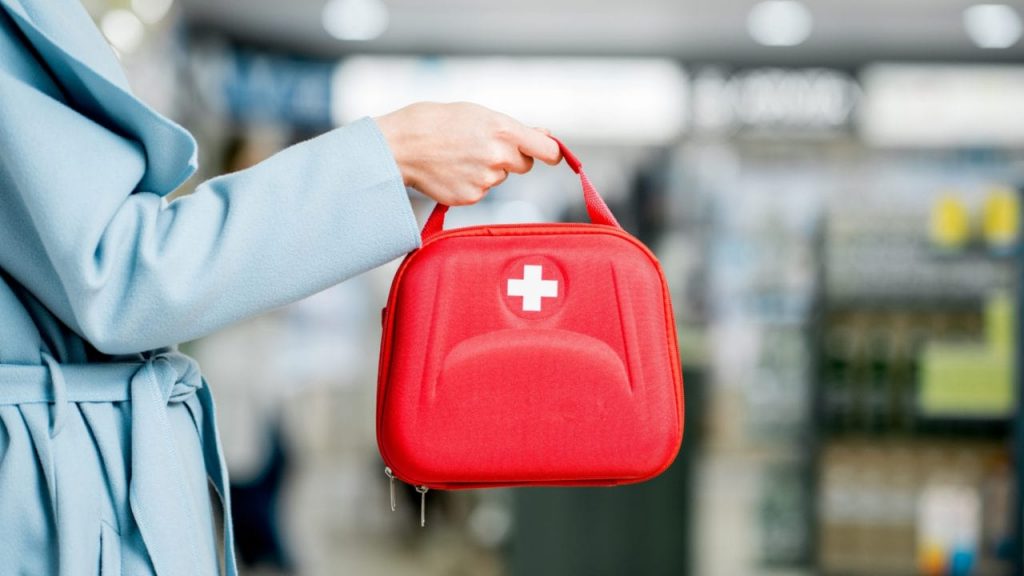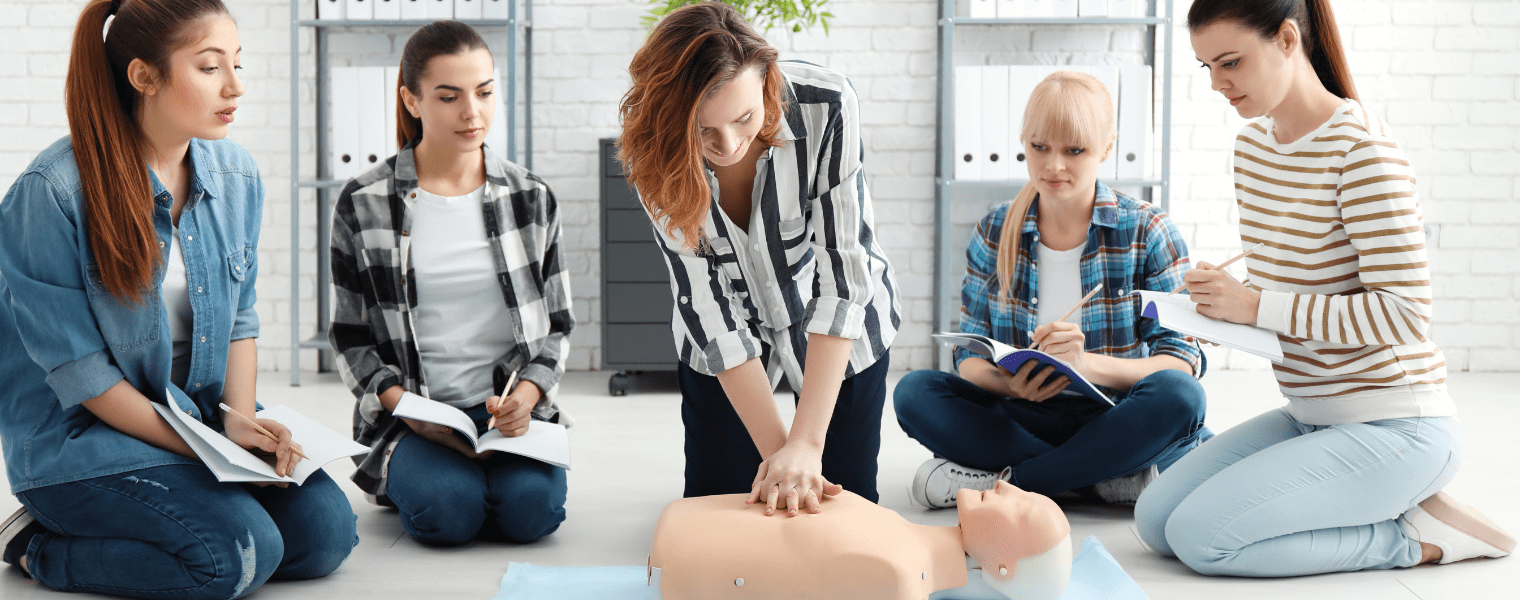The choice of tools for your first aid kit is important if you want to be prepared for any emergency involving minor injuries like abrasions, burns, stings, or cuts. Every home should have a first aid kit, but you should also make sure to have one in your car. Additionally, if you and your family enjoy the outdoors you should always have a minimum of a basic first aid kit on hand.
Preassembled first aid kits are available, but if you prefer certain items above others, it is best to assemble your own. Make sure that all the items are kept together in one box that is both waterproof and seals well.
First aid kits kept in the car should be kept away from direct sun and heat that can damage some of the products. Keep an eye on your first aid kits and replace expired items or items that have been used.

10 Suggested First Aid Kit Contents
When it comes to safety, having a well-stocked first aid kit is essential. Whether you’re at home, on the road, or traveling, a comprehensive emergency medical kit ensures you’re prepared for unexpected situations. A first aid kit for home should include basic first aid supplies, while a first aid kit for car is crucial for roadside emergencies. Don’t forget to pack a travel first aid kit for your adventures! Essential items like bandages and dressings, along with first aid for cuts and scrapes and first aid for burns, are vital for effective wound care. Equip yourself with these wound care essentials to handle any minor injuries with confidence.
Here’s a first aid kit checklist of the top 10 essential contents that should be included in every first aid kit.
1. Antiseptic Wipes or Wash
Antiseptic wipes are the most essential content when you are preparing a first aid kit for your car or travels. The main reason is that when an injury happens and you are on the go, access to soap and water for cleaning wounds might not be readily available. Antiseptic solutions and wipes are the alternatives and can be used to remove dirt from wounds and clean the area to prevent infection. Some of the antiseptic wipes might also include mild pain relief ingredients as well.
2. Adhesive Bandages, Sterile Gauze Pads, and Medical tape
Adhesive bandages in all shapes and sizes are best for dealing with small cuts and scrapes to any part of the body, so include a big variety. Include some waterproof adhesive bandages. Some band-aid varieties have built-in antibacterial ointment. Also, keep a few butterfly-shaped adhesive bandages; these are useful when you want to keep two sides of a wound together.
Sterile gauze pads are individually sealed and are used for larger wounds that can not be covered by adhesive bandages. They can also help to manage and stop bleeding. Before gauze is applied, use an antibacterial ointment to protect the wound. Medical tape is used to secure the gauze into place.

Note: Your first aid kit should have at least three 3X3 inch and three 4X4 inch gauze pads.
3. Elastic Bandages
There are two types of elastic bandages. Whether you choose the ones with Velcro or the ones with the metal clips, these are an essential tool in a first aid kit. Elastic bandages are long and they stretch, hence the name elastic. These specialized bandages can be used to wrap injuries to reduce swellings, keep sprained joints immobile, as a tourniquet to prevent excessive bleeding and to hold cold or hot packs in place when dealing with muscle and bone injuries.
Be Prepared for Anything!
Check out our selection of first aid kits, designed for every situation and need. Whether at home, work, or on the go, having the right supplies is essential for safety.
4. Antibiotic Ointment
After the wound has been cleaned, an antibiotic ointment should be applied directly to it or the bandage before closing it up. An antibiotic ointment helps the healing process and keeps infections at bay. There are various topical antibacterial ointments available that contain antibacterial ingredients like bacitracin, neomycin, and polymyxin to help prevent infections.
Note: Antibiotic ointments are for topical use only and should never be ingested.
5. Scissors
Scissors are essential in every first aid kit because they can be used to snip clothing, trim gauze pads, and open stubborn packaging.

Note: A curved medical scissors is more expensive than craft scissors but easier to use in an emergency.
6. Tweezers
Scissors cannot do the job of tweezers, so you will want to add tweezers to the list of essential content of the first aid kit. Tweezers can be used to remove splinters, glass, and other debris from a wound before bandaging.
Note: Bees leave a stinger behind that needs to be removed but DO NOT use tweezers to remove the stinger. This is a common mistake when dealing with the stinger. Remove the stinger by using a credit card and remove it using a scraping motion. Bee stings might lead to anaphylactic shock.
7. Instant Cold Packs
Bruises, sprains, swellings, and itching benefit from immediate treatment with ice. Unfortunately, if you are not at home, you are highly unlikely to have access to ice. Instant cold packs are the answer. Shake the pack to activate the ingredients and apply to the injury.

Note: Keep several in your first aid kit, because they can only be used once. Also, remember to add a layer of cloth or triangular bandage between the cold pack and the skin for comfort.
8. Pain Relievers
Pain relievers in the form of a tablet or liquid are essential to help ease any painful injuries until the injured person can be seen by a doctor. To decide which type of medication or pain reliever to add to your bag, make sure to visit your regular family physician or local pharmacist.
9. Sting and Bite Treatments
Whether the sting is from an insect, spider, jellyfish, or contact with a plant, it can cause anything from uncomfortable itching to severe pain. Keep a cream or ointment in your first aid kit to help alleviate the discomfort.

Note: If you are aware that someone has an allergy, then an Epi-Pen is essential for your first aid kit.
10. Disposable Gloves
Disposable gloves help to protect both the injured person and the one treating them from bacteria and other harmful germs. It is common for people to have an allergy to latex, so nitrile or neoprene gloves may be better. Also, consider carrying non-powdered gloves as it will leave a less mess on your hands.

Benefits of a First Aid Kit and First Aid Training
There are a variety of ways you can prepare your first aid kit. One option is to hunt the different content from drug stores and put them together and create a kit. Another way is to acquire an already stocked first aid kit. Browse through the list of our amazing first aid kits. We have ensured that even the most simplest of our first aid kits have the most important and critical contents included in them.
And of course it goes without saying, having a fully stocked first aid kit will only take you so far during an emergency. It is important to know how to use each of these ingredients and have the proper skills of dealing with emergencies from the simple cuts and scrapes to more complicated bone and muscle injuries. The skills and knowledge needed to handle such emergencies will be discussed in detail during first aid courses such as Emergency First Aid or Standard First Aid. The courses are now offered as a blended learning training in which participants learn the knowledge and theory online and attend 1 day session to reinforce and practice the skills associated with first aid and CPR. This training is WSIB approved, making is a perfect way to earn a Canadian Red Cross certificate.
Register for First Aid Training
Register today for a First Aid Training course and learn how to deal with emergencies and keep your loved ones safe! Check out our facilities and book your spot now.




















No comment yet, add your voice below!